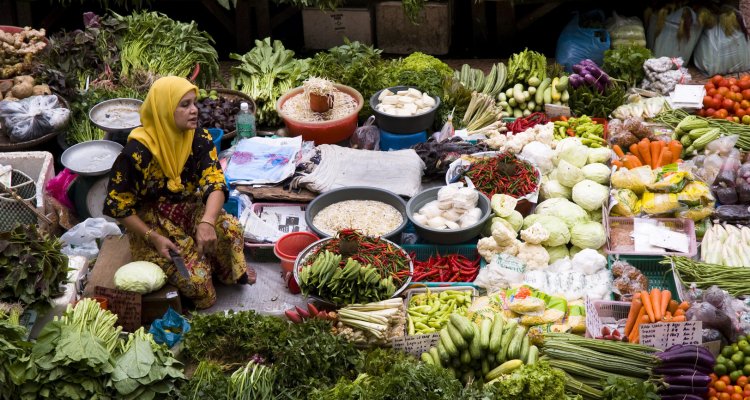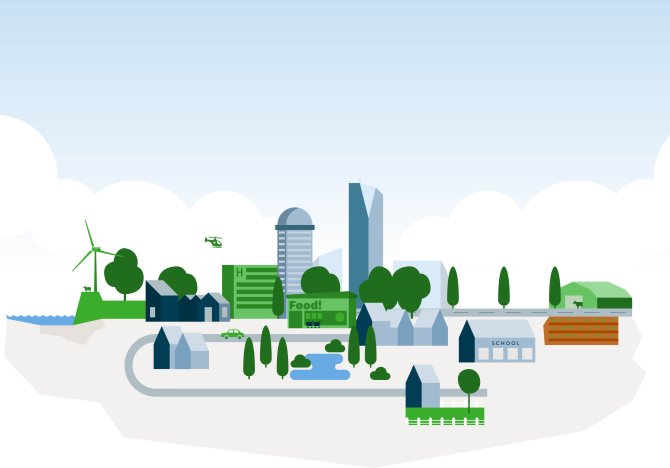
Nourishing the world
By 2050, the world’s population will be approximately 9.7 billion of which almost 70% will live in large urban centres. Cities are already barely coping with the complex changes surrounding climate and food supply. Wageningen Economic Research is engaged in research on how we can ensure the future food and nutrition security worldwide.
It goes without saying that urban regions throughout the world must adapt to the demands of the future. But how do we accomplish this? Peter Ravensbergen, a business developer at Wageningen Economic Research:
A large-scale transition is needed that assists cities and surrounding regions to move incrementally towards a situation where sufficient healthy food is available and affordable.
A precondition for this is that this food has been obtained in a sustainable and reliable manner. Wageningen Economic Research has developed methods that help regions complete the transition, based on data, models, expertise and interaction.
We offer solutions on the city, regional and country level

Ranking your city on food security
The ‘Cities & Food Security’ ranking has been developed to compare cities across the world based on different dimensions of food security, particularly food availability, accessibility and affordability, risk of flooding and climate change, and healthy food. The ranking and explanatory concepts provide support for policymakers in identifying causes and locations of food insecurity, and the indicative results - based on limited available global data - can serve as an incentive for further research with more detailed data from cities.

Transition Support System approach
Cities are growing, the unstable climate is threatening food production, and the challenge of providing enough healthy food for the population of 2050 is looming on the horizon. These are issues that are facing urban areas across the globe, with no standard solution. After all, we are dealing with processes of change that often take more than 20 years. However, there is a standard approach that can be used to cultivate a widely supported vision of the future in our region: the Transition Support System approach.

Food Systems Decision Support tool
Food and nutrition security is an important policy objective in low- and middle-income countries. For policymakers, businesses, farmers and other important actors in the food system, a variety of complex factors are at work, all of which have an influence on the achievement of that objective. These factors play out at different levels, from the macro economy and national policy down to local-level actors with, at times, conflicting interests. Certain risks and barriers can arise out of this, which in turn can prevent policy interventions from achieving their objectives.

A healthy consumer
To tackle the challenge to nourish the world
Meeting the increased demand for food is a challenge and it requires fundamental changes in our food production and consumption. What are the most important and most prominent challenges in food security, food insecurity and nutrition security?
Nutrition for sustainable and healthy food
The current population growth and unhealthy nutrition patterns are increasing demand for healthy food: sufficient, sustainably produced and healthy food focused on nutrients, such as fewer calories and more vitamins. (SDG 2 and SDG 12). In short:
- sufficient food available to everyone;
- diets with the correct nutritional value to sustain health and wellbeing;
- safe and long-lasting food;
- sustainable production and processing.
Climate smart and ecologically sustainable
Food production influences environmental conditions. The challenge is to adjust food production in such a way that it does not harm the environment in the long run, restores ecological damage, adapts to variability and mitigates climate change where possible (SDG 13);
Circularity and resource efficiency
Food is part of local and global ecological cycles. For instance, if the same crop is constantly grown on certain soils, the fertility of the soil will deteriorate. In order not to exhaust our planet, we have to produce more efficiently and re-use resources.
Circular agriculture enables us to produce enough food within the natural limits set by the planet. Circular agriculture is based on the principle that all biomass is optimally exploited. The residual flows from one chain are the raw materials for another. For example, wasted food can be used as animal feed or compost.
To arrive at such a circular food system, we need a transition in which vegetable and animal production chains are linked in a smart way: a shift from chains to circles (SDG 6, SDG 14 and SDG 15).
Innovation and empowerment of communities
Food and eating habits are part of the glue that holds communities together. The production of food is an important economic activity that provides work for many people. Innovations can help communities to develop more climate smart and sustainable ways to produce, process and transport their food. The exchange of information will enable supply and demand for food products to be balanced locally. These opportunities require trust among consumers and new business models.
Urban challenges: an interactive infographic

Read more:
- [Infographic & whitepaper] Urban Challenges
- [Publication] The food systems approach: sustainable solutions for a sufficient supply of healthy food
- [Tools] Brand new: Discover opportunities and threats for your business with Wageningen Food Views
- [Wageningen Environmental Research] Urban food systems